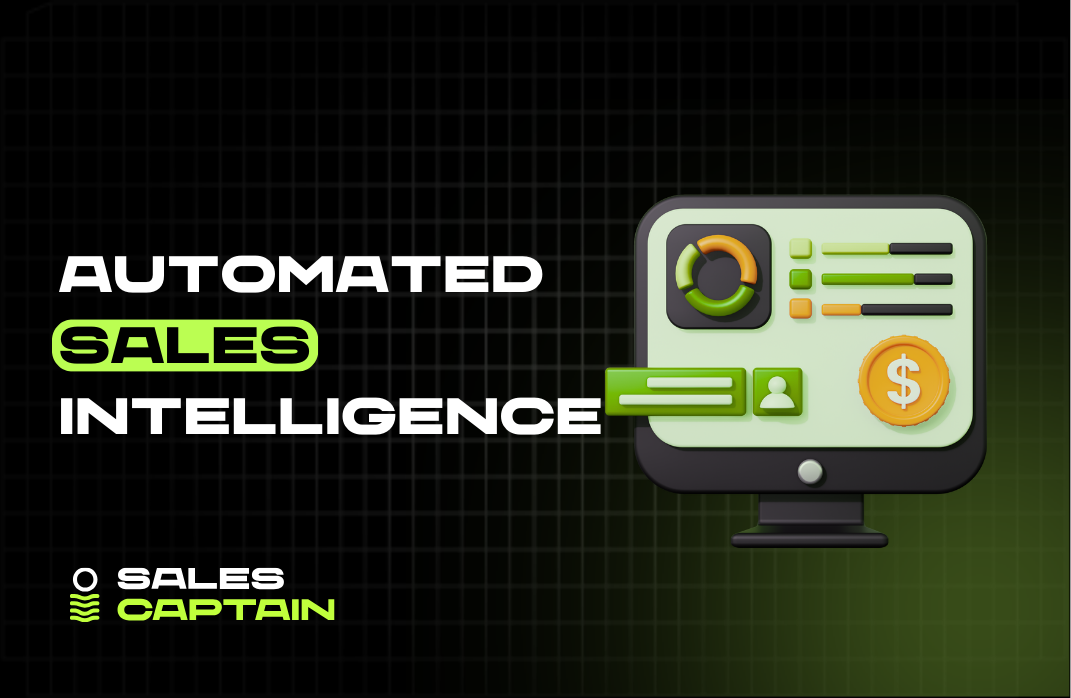

BDR Outsourcing: How to Scale Pipeline and Boost Sales Efficiency

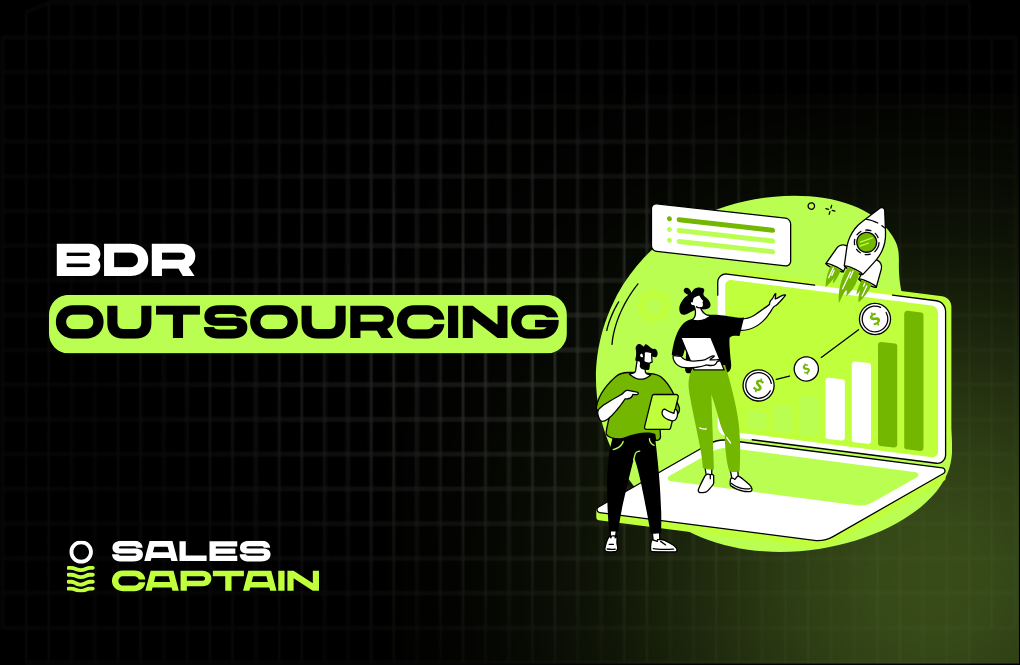
BDR outsourcing has become a powerful lever for companies looking to accelerate pipeline without the cost and complexity of building an internal team. By partnering with specialized agencies, businesses can tap into experienced Business Development Representatives who handle lead generation, appointment setting, and pipeline management, freeing internal teams to focus on strategy and closing deals. In today’s competitive GTM landscape, outsourcing isn’t just a cost-saving measure, it’s a way to access proven outbound systems, cutting-edge tools, and sales talent that can deliver results faster.
Introduction to BDR Outsourcing
Definition of Business Development Representatives (BDRs)
BDRs, short for Business Development Representatives, are the frontline operators of outbound sales. Their job? Identify potential leads, initiate conversations, and qualify prospects before passing them to Account Executives.
They don’t close deals. They open doors.
That means finding ICP accounts, running cold outreach sequences, handling objections, and booking meetings. In modern GTM, they’re part sales, part marketing, part data operator, pulling signals from tools like Clay, plugging into CRMs, and feeding outbound machines.
The role is changing fast. Automation handles more of the manual touchpoints now. The modern BDR is often more process manager than cold caller.
Overview of Outsourcing in Sales
Outsourcing in sales isn't new. Telemarketing and call centers did it decades ago. But today, it’s sharper, specialized, built for high-velocity GTM systems.
BDR outsourcing means hiring external specialists or agencies to manage parts (or all) of your outbound motion. Sometimes that’s just appointment setting. Sometimes it’s full-cycle top-of-funnel: sourcing, sequencing, qualifying, and booking.
Why outsource? Because outbound is now a marketing channel. You need technical workflows, not just hustle. And unless you have the in-house operators to run those systems, outsourcing to a group that’s already shipping results is often the smarter move.
Benefits of BDR Outsourcing
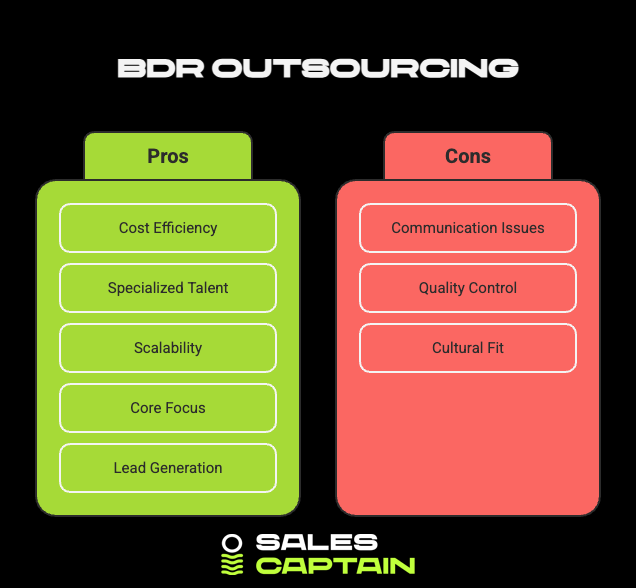
Cost Efficiency
Running an internal BDR team gets expensive fast. Salaries, tech stack, training, turnover. And that’s before they even generate pipeline.
Outsourcing shifts that model. You’re buying outcomes, not headcount. No ramp-up. No overhead. Just results.
Plus, you're spreading your dollars across shared infrastructure. The agency already built the workflows, trained the reps, and dialed in their stack. You plug in. They execute.
Access to Specialized Talent
The best outbound reps aren’t just salespeople anymore. They’re operators. They know how to trigger sequences based on CRM activity, scrape data, reverse-engineer signals.
That kind of talent is hard to find, train, and keep.
Outsourcing gets you immediate access to that level of execution. You’re not hiring juniors fresh out of onboarding. You’re working with specialists who live and breathe outbound.
They’ve tested across industries. They know what plays work. They bring a level of craft that shortcuts your learning curve.
Scalability and Flexibility
One of the biggest unlocks of BDR outsourcing, elasticity.
Need to spin up outreach to a new segment? Test a campaign in a new region? Turn up volume for a product launch? With in-house teams, that takes months.
Outsourced teams can scale up or down without friction. Add reps without hiring. Slack the team and launch a new vertical next week. That type of flexibility turns sales into a responsive GTM lever, not a rigid org chart.
Focus on Core Business Activities
Outsourcing BDR functions frees your internal team to focus on what they’re actually best at, strategy, positioning, product development, closing deals.
BDRs are workflows. Campaign operators. Their job is to drive volume, not vision.
Keeping outbound infrastructure in the hands of specialists means your internal GTM leaders can spend their energy on high-leverage work, not managing inboxes or fine-tuning subject lines.
Enhanced Lead Generation Capabilities
This is the core bet of outsourcing: stronger pipeline, delivered faster.
Outsourced BDR teams specialize in lead gen. They don’t just run your sequences, they optimize them. Test copy frameworks. Experiment with sends. Use platforms like Clay to enrich leads and inject signal data. Feed the machine.
The result? More qualified meetings. Shorter ramp time. Cleaner handoffs to sales.
That’s what modern agencies like SalesCaptain build: outbound machines that run smarter, faster, and more profitably than most internal teams can match.
Types of BDR Services Offered
Lead Generation
This is the baseline. Find leads that match your ICP. Enrich their data. Trigger the right touchpoint at the right time.
Good lead gen isn’t fishing in bulk, it’s precision targeting. Tools like Clay give BDR teams the ability to build dynamic lead lists based on signals, not static filters.
A world-class outsourced lead gen motion will look like this: Identify the accounts likely to convert. Discover the decision-makers. Enrich their profiles. Trigger outreach workflows. Book the meeting. Repeat.
Sales Appointment Setting
Qualifying and converting interest into booked sales meetings is where raw output turns into pipeline.
Outsourced appointment setting teams handle the full dance: multi-channel outreach, objection handling, ICP filtering, calendar scheduling.
This role is often undervalued, but it’s a translation layer. It converts intent into action. Without it, you just have replies. With it, you have revenue.
Pipeline Management
It’s not just about generating leads. It’s about keeping them warm, tracked, and moving.
Pipeline management includes updating CRM records, tracking touchpoints, following up on no-shows, and re-engaging cold leads.
Without it, your top-of-funnel leaks. With it, you create a durable, compounding pipeline machine.
Outsourcing pipeline management ensures precision. Every lead’s status is updated. Every reply is tagged. Nothing slips through the cracks.
Market Research and Analysis
A good outbound program starts with insight. What are your buyers actually doing? What signals can you act on? What messaging resonates?
Some BDR agencies offer research as a service, building TAM lists, segmenting based on technographics or funding data, or analyzing past campaigns to identify trends.
These insights improve targeting upfront and optimization over time.
Reporting and Analytics
You can’t improve what you can’t measure.
Outsourced BDR firms typically deliver dashboards and weekly reports showing reply rates, conversion rates, booking rates, and more.
But the best ones don’t just report, they diagnose. They say, “Add a proof point to email two” or “This persona replies more on LinkedIn.” That’s where ops meets performance.
Without analytics, you’re sending into the dark.
Considerations Before Outsourcing BDR Functions
Evaluating Business Needs
First question: What are you actually trying to solve?
If your team’s calendar is full but you’re struggling to close, don’t buy lead gen. If you’ve got strong inbound but want to break into enterprise logos, maybe look at outbound list-building specialists.
Outsourcing only works when the problem and the provider match. Zoom in on your gaps before adding volume.
Setting Clear Objectives and KPIs
You’re not paying for activities. You’re paying for outcomes.
What metrics matter? Meetings booked per month? SQLs delivered? Pipeline influenced?
Define these KPIs before kickoff. Align on what success means, how you’ll track it, and how quickly you expect to ramp.
Without this clarity, it’s easy to burn cycles on busywork.
Assessing Technological Capabilities
A modern outbound program is 50% people, 50% tooling.
Your provider should be fluent in what matters: Clay for data enrichment. Multi-channel sequencing. CRM hygiene. Inbox infrastructure. Integrations.
If they still rely on spreadsheets and mail merges, they’re not building outbound, they’re just sending emails.
Understanding Geopolitical Stability
If you’re outsourcing offshore (especially to LATAM or APAC), make sure there’s operational consistency.
Time zone alignment. Internet connectivity. Political and economic stability. Access to secure tooling.
It doesn’t mean you shouldn't go offshore. It means you need a plan. Reliability beats cost savings.
Budget Considerations
Outsourcing isn’t always cheaper. It’s just more efficient.
Expect to pay for quality. The best agencies aren’t cheap, because they’ve already figured out what works, and you’re buying into that system.
The real question: What's your cost-per-opportunity today? If that number’s bloated, an outsourced GTM team could be the smarter bet.
Choosing the Right BDR Outsourcing Partner
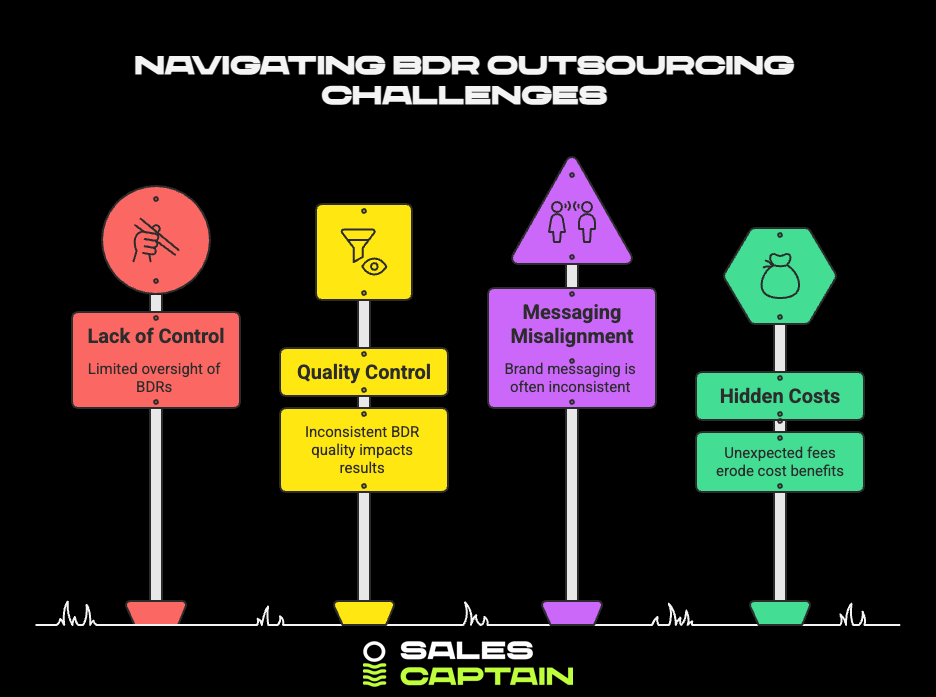
Identifying Potential Vendors
The agency landscape is crowded. Some are glorified staffing firms. Others are technical growth operators disguised as sales teams.
Start with clarity:
- Do you want raw volume? Go with a dialing shop.
- Do you want revenue-qualified meetings? Find a strategic outbound agency.
Look at the team, the offering, and the proof. Pick a partner, not a platform.
Assessing Expertise and Experience
Experience isn’t just years. It’s context.
Have they executed in your vertical? Sold to your buyer persona before? Worked with companies at your size and stage?
The best partners already know your world. They don’t need a training manual. They just get to work.
Ensuring Cultural Fit and Communication
Outsourcing fails when alignment breaks.
Do they speak your language, both literally and operationally? Can you jump on Slack and troubleshoot? Will they give honest feedback, or just tell you what you want to hear?
You’re not just buying outbound. You’re buying collaboration. Make sure it clicks.
Reviewing Case Studies and Client Testimonials
Anyone can claim results. The proof is in the deals.
Ask to see playbooks from previous clients. Metrics before and after. Anonymous screenshots. Actual reply threads.
Strong agencies will show you the work. Weak ones will show you a deck.
Investigating Compliance and Data Security
Are they GDPR-compliant? Do they have systems for handling PII? How do they manage data hygiene?
Outbound moves through a lot of inboxes, tools, and CRMs. One slip can cost you trust, reputation, or worse.
Make compliance table stakes. Not an afterthought.## Common Challenges and Pitfalls
Lack of Control and Oversight
When you outsource BDR functions, you’re giving up a level of control. You’re no longer directly managing the team that’s sending emails under your brand, handling responses from your prospects, and teeing up sales conversations.
That can feel risky.
You can’t stand over their shoulder and review every message. You can’t easily course-correct tone or pivot strategy midstream unless the agency has systems in place for tight feedback loops. If their reporting cadence is monthly and you need weekly pivots, that gap becomes painful fast.
It’s not about micromanaging, it’s about visibility. The best partners create shared dashboards, jump into standups, and run like an extension of your GTM team. Without that integration, you're blind to how your outbound is being executed.
Quality Control Issues
Not all outsourced BDRs are created equal.
Some might batch-blast generic scripts to bloated lists. Others may lack the industry context to filter the right accounts or handle objections well. That dilutes your brand and leads to wasted motion, bad meetings, unqualified leads, wrong buyers.
You don’t just need output. You need precision.
Quality issues often creep in when reps are incentivized by activity, not conversion. If they’re measured on send volume alone, you’ll get spam. If their call scripts are templated across unrelated clients, your messaging will hit flat.
This is where vetting matters. Ask to see copy samples, call recordings, list criteria. Build a quality review process before the first message goes out.
Misalignment with Brand Messaging
Brand ≠ logo. It’s voice. Positioning. Language that speaks to your ICP in your tone, your market, your way.
Outsourced BDRs often sit outside that context bubble. They weren’t in the last marketing all-hands. They don’t know the product roadmap. They’re not hearing real objections from AEs inside the CRM.
So what happens? They use off-brand language. They misrepresent the offer. They pitch like it’s 2018.
That disconnect can cost you trust, and pipeline.
Solve it with onboarding. Build a library of brand-safe messaging, elevator pitches, ICP deeper than job title. Give them access to your docs or internal calls. Messaging alignment isn’t optional. It’s oxygen.
Hidden Costs and Contractual Complications
Outsourcing looks cheap... until you read the fine print.
Some vendors charge setup fees, list-building fees, data licensing add-ons, per-lead costs, retainer minimums, and it stacks up. You wanted a predictable pipeline engine, but you're swimming in variables.
Worse, some contracts have lock-in clauses or unclear ramp timelines. So if things go sideways, you can’t pivot or pause easily.
Good partners are upfront. They price transparently. They bake outcomes into contracts without spinning up dozens of line items. If you’re spending more time managing the contract than the campaign, the model's broken.
Map out total cost of ownership before you sign. And always ask: “What happens if this doesn’t work?”
Measuring Success in BDR Outsourcing
Key Performance Indicators (KPIs)
Don't default to “meetings booked.” That’s output, not impact.
Define success based on your funnel. What matters for you might be:
- Qualified meetings accepted by AEs
- Pipeline generated per month
- Reply-to-meeting conversion rate
- Average deal size influenced by outbound
Track both performance (emails sent, replies, meetings) and quality (conversion rates, lead fit, handoff cleanliness). The right KPIs show how outbound contributes to your GTM system, not just your calendar.
ROI Assessment
Outsourcing should accelerate your revenue, not just shift headcount.
The real calculation: what’s your cost per pipeline dollar generated?
Look at total spend (not just retainer, but tools, data, internal time) versus the qualified pipeline created. Then compare to your in-house benchmarks. If you’re spending less and closing more, it’s working.
But ROI isn’t just numbers. Consider time-to-impact. Opportunity cost. Ramp curve. A fast-moving outbound system, even if it costs more, can drive compounding returns if it speeds up learning cycles and sales velocity.
Client Feedback and Satisfaction
Your sales team should love the handoffs.
Take feedback from AEs and marketers seriously. Are the meetings scoped well? Are prospects aligned with your buying persona? Do they understand the value prop by the time they land in a discovery call?
If internal teams are constantly cleaning up bad meetings or correcting positioning, there’s a problem upstream. Outsourcing should remove friction, not add it.
Run regular feedback loops with internal stakeholders. Every deal starts with a conversation, if that’s broken, no amount of delivery metrics will fix it.
Continuous Improvement Strategies
Pipeline is not set-it-and-forget-it. You need iteration.
The best outsourced teams don’t just execute. They optimize. They test subject lines, adjust targeting, run cadence tweaks, and share learnings.
This only works inside a proper GTM feedback loop. Marketing insights feed messaging. AE feedback shapes qualification criteria. Data signals inform timing and segmentation.
Ask your provider, “What are you testing this month?” If they can’t answer, they’re not improvising, they’re stagnating.
The loop is the lever.
Alternatives to BDR Outsourcing
In-House BDR Team Development
Building your own team means control. You own the stack, the scripts, the culture.
But you also own the costs. Headcount, tools, management, training. Plus the ramp time, it could take months before your team is fully productive.
You’re not just hiring reps. You’re building a micro-ops organization: tech setup, data sourcing, QA processes, reporting hygiene.
For some companies, especially with niche markets or long sales cycles, in-house makes sense. But it only works if you treat the BDR team as an infrastructure play, not just a warm body motion. That’s the trap.
Hybrid Approaches Combining In-House and Outsourced Solutions
Why pick one?
Many fast-moving GTM teams run hybrid models: they keep strategic outbound in-house, maybe focused on tier-one accounts, and augment with outsourced providers for volume, market testing, or overflow capacity.
It lets you own messaging where it matters, but still run scalable plays in parallel. You get both control and coverage.
But hybrid only works when it’s orchestrated. Don’t let internal and external teams run separate campaigns with clashing cadences or duplicate touches. Sync the sequences, unify the ICP, and route lead flows correctly.
Done right, hybrid can be your growth multiplier.
Leveraging Technology and Automation for BDR Functions
Here’s the other alternative: don’t hire at all. Just automate.
AI and modern tools have made outbound programmatic. You can now:
- Auto-build enriched lead lists from live signals via platforms like Clay
- Trigger multi-channel sequences based on CRM or product events
- Auto-qualify leads with AI workflows before a human ever steps in
For earlier-stage startups or lean teams, this can replace the traditional BDR role almost entirely.
Instead of headcount, you’d hire a technical GTM operator, someone who builds systems, not sends emails. They run the infrastructure. Automation does the rest.
Outbound doesn’t mean SDRs anymore. It means signals, workflows, and systems.
FAQs
They’re often used interchangeably. But technically:
- BDRs usually handle outbound. Cold outreach. Net-new pipeline.
- SDRs often focus on inbound. Scoring, qualifying, and responding to hand-raisers.
Think of BDRs as hunters and SDRs as responders. Both are pipeline roles, just tackling different ends of the journey.
That said, most modern GTM teams blur the lines. Titles matter less than what they're actually doing.
Start with alignment. Define what qualifies as a good lead, persona, intent signals, deal size, pain points.
Then build review checkpoints:
- Is every lead enriched?
- Do they match ICP specs?
- Are they passing qualification criteria before meetings get booked?
Also, monitor AE feedback. If reps are rescheduling half the meetings, quality is off, even if it hits the spreadsheet.
Transparency, criteria, and closed-loop feedback protect lead quality.
It varies depending on scope, geography, and service level.
You might see:
- Flat monthly retainers ($5K–$20K+)
- Per-meeting pricing ($200–$600 depending on qual level)
- Setup or tooling fees
- Bonus tiers for overperformance
Good partners price for pipeline, not just activity. The real cost isn’t in the retainer, it’s in missed conversion if the execution is weak.
Always map cost per opportunity against deal size and close rate. That tells you if it’s worth it.
Drop scripts. Build systems.
Give your outsourced team:
- Persona guides
- Approved messaging templates
- Examples of real conversations that worked
- Access to internal branding documents or case studies
Better yet, involve them in strategy. Include them in GTM syncs. Review copy drafts together.
Brand voice isn't just tone. It's clarity on who you’re talking to, why they should care, and how you show up.
Bake it into onboarding or you’ll end up fixing it downstream.
Use outsourcing when:
- You need to move fast and can’t wait 3 months to hire and train.
- You lack internal bandwidth or expertise in outbound.
- You’re testing a new market or ICP and want to validate before scaling.
- Your cost-per-opportunity is bloated and you want efficiency.
It’s not just about team size, it’s about system readiness.
If GTM is a machine, outsourcing is like plugging in a pre-built module instead of building one from scratch. Just make sure it integrates with everything else you’ve built.
RELATED ARTICLES
Lorem ipsum dolor sit amet, consectetuer adipiscing elit, sed diam nonummy nibh euismod tincidunt ut laoreet dolore magna aliquam erat volutpat.
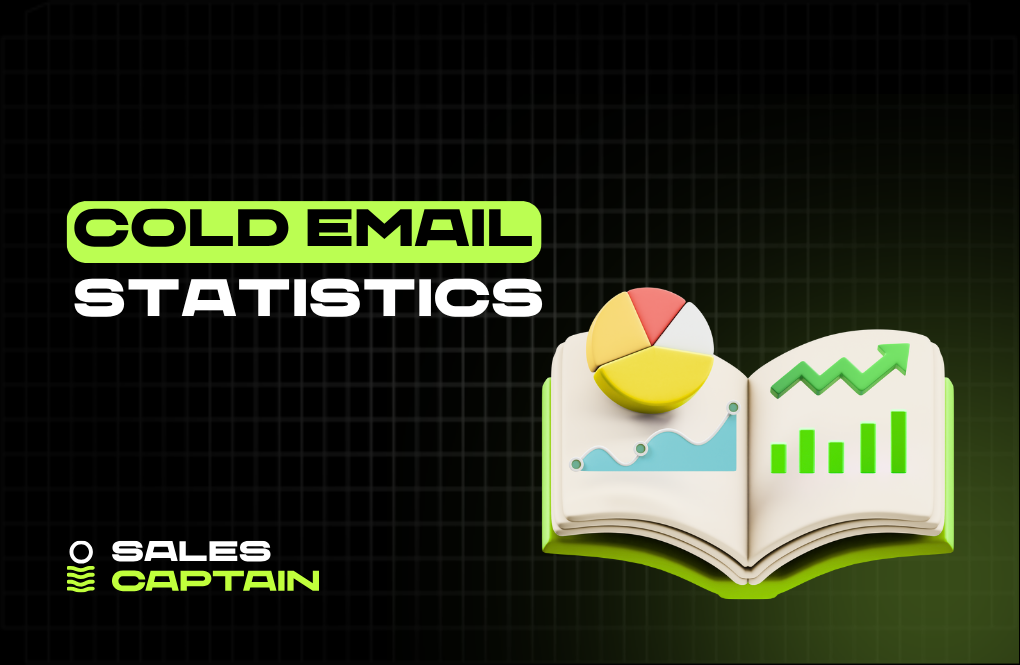



.jpg)
.png)
